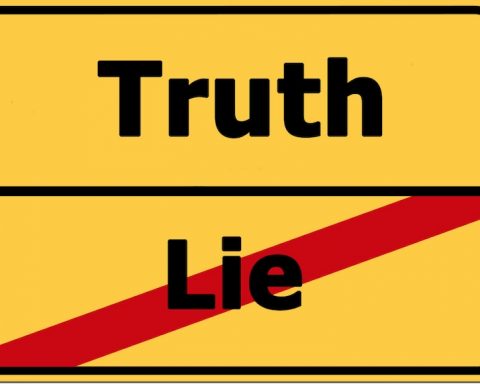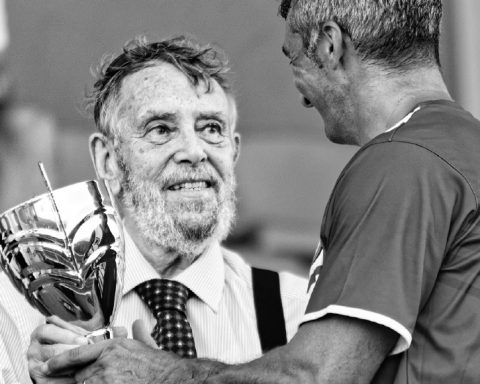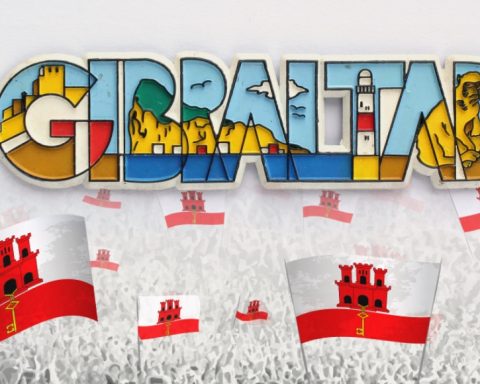THE STORY OF HMS GIBRALTAR THOUGH THE AGES
The first was a 20 gun sixth rate launched in 1711. She was rebuilt in 1727 to become a practically new ship.
On 3rd of September 1742 under the command of Captain Thorpe Fawke, HMS Gibraltar was sent to Jamaica to bring Admiral Vernon and General Wentworth back to England in disgrace. Admiral Edward Vernon was a lieutenant on HMS Barfleur under Admiral Cloudisley Shovell at the capture of Gibraltar and the Battle of Velez Malaga. He transferred to HMS Britannia with Shovell remaining in the Mediterranean and in HMS Rye formed part of Shovell’s fleet in 1707 that was wrecked off the Scilly Isles, his ship survived.
In 1727, he was in Gibraltar for a short tour in the Mediterranean fleet. In 1739 he was promoted to Vice Admiral and given a squadron of five ships in the West Indies in what was to be known as the “War of Jenkin’s Ear” against Spanish aggression towards British Traders in the Caribbean. (sound familiar?) The task he was given, verged on the impossible. It was obvious that he was the victim of political infighting. He was tasked to attack as many of the Spanish colonies as possible but it was hoped he would fail and return to London in disgrace. He proved them wrong and returned having in triumph, having captured Puerto Bello.
He returned to the area in 1741 with a fleet of 186 sail and a military contingent of 27,000 men under Lieutenant General Wentworth. The operation was a fiasco. The superior British force was unable to overthrow the weak and incompetent Spanish garrison of 3500 men and six ships of the line, resulting in heavy losses and a defeat. Vernon and Wentworth returned to Jamaica. The two Officers were constantly at loggerheads and hence the recall to London.
Admiral John Byng was a lieutenant in 1723 at the age of 19 and then Captain of HMS Gibraltar at 23. He was executed under article 12 of the Articles of War for the loss of Minorca in 1757. HMS Gibraltar was sold in 1748 for £340 (£17m today).
Gibraltar number two was a twenty gun sixth rate frigate built at Beaulieu in 1756. She had a crew of one hundred and sixty. This same year saw the beginning of the Seven Year War, in which the French prepared to invade England.
In 1756 The Gibraltar captured a French gunship of 16 guns called the Gleneur, which was renamed the Gibraltar Prize. The following year she captured a twenty six gun French privateer. Under the command of Captain William M’Cleverty. HMS Gibraltar was in Gibraltar as part of Admiral Boscawen’s fleet blockading the French fleet in Toulon. Under Admiral Jean- Francois de la Clue this fleet was anxious to join the main French fleet in Brest for the invasion. Not having any other port available, Boscawen came to Gibraltar to re-vital and water. While out on patrol in the Strait on August 17th, the Gibraltar sighted the French fleet of fifteen warships off the coast of Morocco. She quickly returned to Gibraltar and Admiral Bascawen promptly put to sea with a fleet of twenty nine ships.
Due to the weather, the English ships got spread out and many lost contact with each other however, next day, eight of the fleet caught sight of the enemy and the signal made to “engage the enemy.” The Namur, Boscawen’s flagship was severely damaged which forced the Admiral to shift his flag to the Newark of 80 guns. It is reported that as he was rowed across, a shot made a hole in the boat which he plugged with his wig. The French fleet made a run for Lagos bay in Portugal. The chase went on through the night. Later the Centaure, which was severely damaged during the battle, lowered her flag and was taken as a prize. On the 19th all but two of the remaining ships sought shelter in Lagos Bay. Many of the ships were in a bad shape, in fact, Admiral De La Clue’s flagship ran aground and the wounded Admiral surrendered.
Despite the French being under the Portuguese batteries, the English ship attacked the remaining three ships, burning two and capturing the other one. One of the ships captured was the Temeraire, her namesake was the subject of a famous painting.
HMS Gibraltar was unable to catch up with the fleet but was given the task of taking the Flag Captain with the despatches to England. As was the custom, she received £500 from the King. This action allowed the two British fleets to join which was a major factor in the battle of Quiberon Bay which finally put paid to French plans to invade England. Here again it was HMS Gibraltar that reported the departure of the French fleet from Brest to Admiral Hawke but she took no part in the subsequent battle. Boscawen was criticized for attacking the French fleet in a neutral port, but did no harm to his career. Her career ended in 1773
The third HMS Gibraltar was the Gibraltar Prize already mentioned above. She was the French 16 gun Gleneur of 117 tons, with a crew of fifty and a privateer which was another name for a legal pirate. Purchased for £795 in 1757 and sold in 1761 for £135.
In 1781 an American 14 gun brig was captured. This 85 tonner with a crew of 45 was renamed HMS Gibraltar. As number four and under the command of Lieutenant Anderson she was captured by the Spanish in 1781 and renamed Salvador but was recaptured by HMS Anson in 1800.
Gibraltar number five was a ship captured from the Spaniards. Fenix was an 80 gun warship captured by Admiral George Rodney off Cape St Vincent. At 2184tons, she was a force to be reckoned with. 174ft long she had been the flagship of Vice Admiral Juan de Langara. In this battle, Rodney was ill and spent the entire battle in his bunk. He was escorting a relief convoy for Gibraltar where the situation was critical. The siege was in its second year and supplies were rock bottom. He saw that the Spanish ships were not part of a larger fleet, and by 2pm he gave orders to pursue them. Langara made for Cadiz but Rodney cut off their retreat. The Spanish fleet consisted of twelve ships, ten were third rate 74 gun, except Langara’s Fenix which carried 80, the rest were frigates of 34 guns. The British fleet consisted of one first rate 100 gun, two second rate 90 guns, fifteen third rate 74 and six frigates of 32 and 24 guns. By 4pm the first shots were fired. One of the Spanish ships blew up after receiving a broadside, another surrendered after an hour long battle. By six pm it was getting dark but it was decided to continue the pursuit. It was now dark and HMS Defence came into contact with the Fenix. HMS Prince George and Montague joined in the fight and Langara was wounded. The Fenix finally surrendered to HMS Bienfaisant who came up late in the contest. There was however a problem, Bienfaisant had an outbreak of smallpox on board. The British captain explained the position to Langara and so as not to infect the Spanish crew by sending over a prize crew, it was agreed to put him and his crew on “Parole.” The British captured six ships. One of the prizes, the San Julian was too damaged and was driven ashore. How many of the prizes reached Gibraltar is unclear as the Spanish claim that many were retaken and sailed to Cadiz. When Rodney arrived in the Bay with the relief supplies, the Spanish blockading fleet retreated to Algeciras. Langara was taken to Tangier and freed on parole with the other Spanish prisoners. The Fenix was purchased for the Royal Navy and renamed Gibraltar. This was known as “The Midnight Battle.”
In April 1781 under Captain Knutchbull and flying the flag of Rear-Admiral Drake, she was part of the Hood’s fleet in a fight with a French fleet off Martinique suffering six dead and eight wounded. In June 1783 she was again in action in the East Indies, flying the pennant of Commodore Bickerton in what became known as the Battle of Cuddalore. Unfortunately this battle was fought after peace negotiations had commenced unbeknown to either party. This time the toll was six killed and four wounded.
Her next recorded action was on the 5th of May 1794 off Ushant. The bad gunnery of the Gibraltar caused her shots to hit the Queen Charlotte. It appears that the captain missed a signal from the Flagship and ended up out of position, thereby missing most of the action. The toll was still two killed and twelve wounded. On July 9th under Captain Pakenham the Gibraltar was part of a Neapolitan-British fleet which fought an action against the French fleet of Hyeres near Toulon.
In 1796 while anchored in Gibraltar a fierce gale came up. In those days the south mole was only 300meters long and provided no shelter from the weather to ships anchored inside the bay. The Courageux had already ended up on Pearl Rock at the entrance to the bay and was a write off. HMS Gibraltar found herself in dire straits. She was forced to cut her anchor cable. At 9pm she set her foresail and stay sails and by 9.30pm the mainsails and main topsails were also set in order to get passed Cabrita Point. The main topsails split as soon as they were set and at 10pm the gale increased in violence carrying away the fore topmast and split her foresail, mainsail, main topmast staysail and mizzen staysail. Having virtually nothing left she ran over the Pearl Rocks. Fortunately she was a sturdily built ship and despite the grounding, took no water on. She hove to but finally made it to Tangier where she anchored with her remaining anchor.
Another account of the incident claims that the sails got caught up stopping them from setting the sails and that after hitting the rocks, the crew were prepared to abandon ship but the First Lieutenant found the rudder still free and as a wave washed the ship off the rocks they made their way to Tangier. Which one is the true story is anyone’s guess. The Gibraltar rejoined the fleet but it was decided she was too damaged and required to return to England to enter dry dock for repair. She did not sail for five weeks and was taken into docks at Plymouth on March17th 1797
When examined in dock a large rock was found wedged into her hull. Had it fallen out during the return voyage she would probably have sunk.
In 1801, Commanded by Captain William Hancock Kelly, HMS Gibraltar was part of a squadron of nine ships that attacked the French batteries at Porto Ferrairo.
In 1803, the ship’s company were near to mutiny having been kept abroad long after the war had been concluded.
On March 17th 1809 under captain Lidgbird Ball the Gibraltar was one of sixty ships commanded by Admiral Gambier that attacked the French fleet in the Basque Roads. Fireships were employed in the attack, one of which was commanded by Lieutenant Cookesley of the Gibraltar. She was broken up in 1836
Gibraltar number seven was a four gun cutter known as “Fuerte de Gibraltar” and captured from the Spanish by HMS Mercury on the 4th of February 1805.
Number eight was a 101 ton screw ship launched in Davenport in 1860. This ship was converted to a Training ship for Belfast and renamed “Grampion in 1888.
It is important to note that the core of Mayoral Mace in the Greenwich City Council is made from part of the Grampion (Ex HMS Gibraltar)












